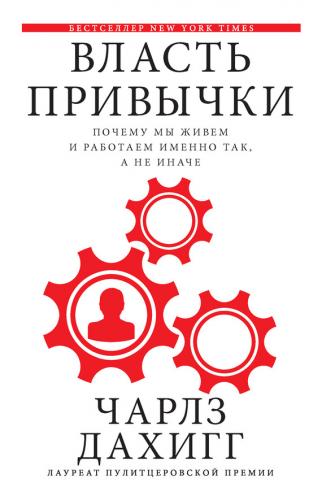7
Richard J. Whitley & David W. Kimberlan, “Viral Encephalitis”, Pediatrics in Review 20, № 6 (1999): 192–98.
8
В одних опубликованных исследованиях сказано, что Г.М. получил травму в девять лет; в других – в семь.
9
Во всех исследованиях, опубликованных до сих пор, указано, что Г.М. сбил велосипедист; согласно новым данным, он мог упасть с мотоцикла.
10
Luke Dittrich, “The Brain That Changed Everything”, Esquire, 10/2010.
11
Eric Hargreaves, “H.M.”, Page O’Neuroplasticity, http://homepages.nyu.edu/~eh597/HM.htm.
12
Benedict Carey, “H.M., Whose Loss of Memory Made Him Unforgettable, Dies”, The New York Times, 5/12/2008.
13
В то время это была обычная практика.
14
Dittrich, “The Brain That Changed Everything”; Larry R. Squire, “Memory and Brain Systems: 1969–2009”, Journal of Neuroscience 29, № 41 (2009): 12711–26; Larry R. Squire, “The Legacy of Patient H.M. for Neuroscience”, Neuron 61, № 1 (2009): 6–9.
15
Jonathan M. Reed et al., “Learning About Categories That Are Defined by Object-Like Stimuli Despite Impaired Declarative Memory”, Behavioral Neuroscience 113 (1999): 411–19; B. J. Knowlton, J. A. Mangels, & L. R. Squire, “A Neostriatal Habit Learning System in Humans”, Science 273 (1996): 1399–1402; P. J. Bayley, J. C. Frascino, & L. R. Squire, “Robust Habit Learning in the Absence of Awareness and Independent of the Medial Temporal Lobe”, Nature 436 (2005): 550–53.
16
B. Bendriem et al., “Quantitation of the Human Basal Ganglia with Positron Emission Tomography: A Phantom Study of the Effect of Contrast and Axial Positioning”, IEEE Transactions on Medical Imaging 10, № 2 (1991): 216–22.
17
G. E. Alexander & M. D. Crutcher, “Functional Architecture of Basal Ganglia Circuits: Neural Substrates of Parallel Processing”, Trends in Neurosciences 13 (1990): 266–71; André Parent & Lili-Naz Hazrati, “Functional Anatomy of the Basal Ganglia”, Brain Research Reviews 20 (1995): 91–127; Roger L. Albin, Anne B. Young & John B. Penney, “The Functional Anatomy of Basal Ganglia Disorders”, Trends in Neurosciences 12 (1989): 366–75.
18
Alain Dagher & T. W. Robbins, “Personality, Addiction, Dopamine: Insights from Parkinson’s Disease”, Neuron 61 (2009): 502–10.
19
Разобраться в экспериментах, которые проводят в лабораториях Массачусетского технологического института, а также в строении и функциях базальных ганглий, включая их роль в привычках и памяти, мне помогли следующие материалы: F. Gregory Ashby & John M. Ennis, “The Role of the Basal Ganglia in Category Learning”, Psychology of Learning and Motivation 46 (2006): 1–36; F. G. Ashby, B. O. Turner & J. C. Horvitz, “Cortical and Basal Ganglia Contributions to Habit Learning and Automaticity”, Trends in Cognitive Sciences 14 (2010): 208–15; C. Da Cunha & M. G. Packard, “Preface: Special Issue on the Role of the Basal Ganglia in Learning and Memory”, Behavioural Brain Research 199 (2009): 1–2; C. Da Cunha et al., “Learning Processing in the Basal Ganglia: A Mosaic of Broken Mirrors”, Behavioural Brain Research 199 (2009): 157–70; M. Desmurget & R. S. Turner, “Motor Sequences and the Basal Ganglia: Kinematics, Not Habits”, Journal of Neuroscience 30 (2010): 7685–90; J. J. Ebbers & N. M. Wijnberg, “Organizational Memory: From Expectations Memory to Procedural Memory”, British Journal of Management 20 (2009): 478–90; J. A. Grahn, J. A. Parkinson & A. M. Owen, “The Role of the Basal Ganglia in Learning and Memory: Neuropsychological Studies”, Behavioural Brain Research 199 (2009): 53–60; Ann M. Graybiel, “The Basal Ganglia: Learning New Tricks and Loving It”, Current Opinion in Neurobiology 15 (2005): 638–44; Ann M. Graybiel, “The Basal Ganglia and Chunking of Action Repertoires”, Neurobiology of Learning and Memory 70, № 1–2 (1998): 119–36; F. Gregory Ashby & V. Valentin, “Multiple Systems of Perceptual Category Learning: Theory and Cognitive Tests”, Handbook of Categorization in Cognitive Science, ed. Henri Cohen & Claire Lefebvre (Oxford: Elsevier Science, 2005); S. N. Haber & M. Johnson Gdowski, “The Basal Ganglia”, The Human Nervous System, 2nd ed., ed. George Paxinos & Jürgen K. Mai (San Diego: Academic Press, 2004), 676–738; T. D. Barnes et al., “Activity of Striatal Neurons Reflects Dynamic Encoding and Recoding of Procedural Memories”, Nature 437 (2005): 1158–61; M. Laubach, “Who’s on First? What’s on Second? The Time Course of Learning in Corticostriatal Systems”, Trends in Neurosciences 28 (2005): 509–11; E. K. Miller & T. J. Buschman, “Bootstrapping Your Brain: How Interactions Between the Frontal Cortex and Basal Ganglia May Produce Organized Actions and Lofty Thoughts”, Neurobiology of Learning and Memory, 2nd ed., ed. Raymond P. Kesner & Joe L. Martinez (Burlington, Vt.: Academic Press, 2007), 339–54; M. G. Packard, “Role of Basal Ganglia in Habit Learning and Memory: Rats, Monkeys and Humans”, Handbook of Behavioral Neuroscience, ed. Heinz Steiner & Kuei Y. Tseng, 561–69; D. P. Salmon & N. Butters, “Neurobiology of Skill and Habit Learning”, Current Opinion in Neurobiology 5 (1995): 184–90; D. Shohamy et al., “Role of the Basal Ganglia in Category Learning: How Do Patients with Parkinson’s Disease Learn?” Behavioral Neuroscience 118 (2004): 676–86; M. T. Ullman, “Is Broca’s Area Part of a Basal Ganglia Thalamocortical Circuit?” Cortex 42 (2006): 480–85; N. M. White, “Mnemonic Functions of the Basal Ganglia”, Current Opinion in Neurobiology 7 (1997):
